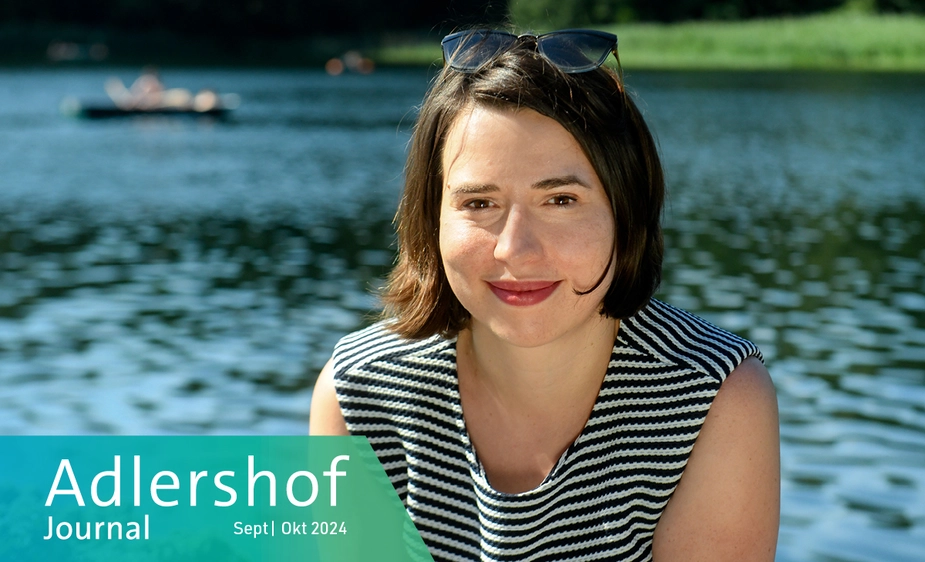In conversation with Patricia Löwe
Executive Assistant to Corporate Communication at Forschungsverbund Berlin
Forschungsverbunds Berlin e. V. (FVB), an association of non-university research institutes in Berlin, recently put out the following statement: “In these turbulent times—faced with ongoing crises and attacks on our democracy—, it is our task and civic duty as scientists to stand up for what makes our research possible: freedom of thought, curiosity towards the unknown, the pursuit of knowledge and technology to improve lives, and the advocacy of equal rights for all individuals regardless of background or origin.” Openness and tolerance are important topics in the FVB’s current communication. We spoke to the responsible PR officer Patricia Löwe, who has a PhD in philosophy, about necessary and new paths for an exchange between science and society.
Adlershof Journal: How do you communicate on behalf of FVB?
Patricia Löwe: The research association consists of seven Leibniz institutes—in Adlershof, these include the Max-Born-Institut for Nonlinear Optics and and Short Pulse Spectroscopy and the Institute for Crystal Growth—and a joint administration. The institutions are highly engaged in communicating scientific information. The corporate communications department represents the research alliance as a whole, utilises the press work done by its institutes, and amplifies it. Moreover, we curate the website, put out publications and press releases, and communicate our content through social media channels. Some of it concerns recruiting and employer branding. A lot is in flux here. With such a variety of tasks, I benefit greatly from my previous work in the cultural sector.
Which formats or channels do you consider effective?
It’s the moment of TikTok, videos, and reels. Those who don't take action here risk losing touch with the younger generation. We are currently seeing that in politics, especially.
I also think that the Long Night of the Sciences is a fantastic format. This year, like in the years before, we showcased the work of our researchers to visitors who ranged from four to 90 and presented exhibits like crystals, blue-green algae, periscopes, and the foetus of a rhinoceros created by artificial insemination, which was the highlight. Those wanting to delve deeper could visit the individual institutes.
Why is it necessary to communicate scientific topics to people?
There are various reasons. First, I would say, because they are incredibly cool and interesting. This also includes many things that are not quite as obviously fascinating as dinosaur bones.
We also have a duty to inform. Informed people are more capable to act and to act in an informed way. However, I also think that every person has the duty to educate themselves. I see this as a permeable membrane: Just as research must somehow get into the world, research must also let society in.
How can science communication break out of its bubble?
I believe we need to step out of our comfort zone, engage more in a dialogue, and be present in unusual places—on the street, in pubs, or at public events. We need new approaches and unconventional ideas.
What kind of society is necessary to enable science and research?
Research, especially fundamental research, should be done without any practical end-use in mind. It needs time and resources, but also the freedom to fail. But—and this is more important than ever: A society must be open, tolerant, democratic, and free for research to be possible at all. Only in a democracy can we attract the best minds and international talent.
Peggy Mory for Adlershof Journal
Forschungsverbund Berlin e.V. - Press Contact (fv-berlin.de)
